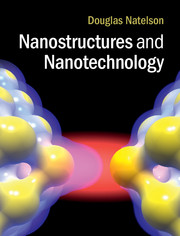Book contents
- Frontmatter
- Contents
- Preface
- Part I
- Part II
- 6 Charge transport and nanoelectronics
- 7 Magnetism and magnetoelectronics
- 8 Photonics
- 9 Micro- and nanomechanics
- 10 Micro- and nanofluidics
- 11 Bionanotechnology: a very brief overview
- 12 Nanotechnology and the future
- Appendix Common quantum mechanics and statistical mechanics results
- References
- Index
10 - Micro- and nanofluidics
from Part II
Published online by Cambridge University Press: 05 July 2015
- Frontmatter
- Contents
- Preface
- Part I
- Part II
- 6 Charge transport and nanoelectronics
- 7 Magnetism and magnetoelectronics
- 8 Photonics
- 9 Micro- and nanomechanics
- 10 Micro- and nanofluidics
- 11 Bionanotechnology: a very brief overview
- 12 Nanotechnology and the future
- Appendix Common quantum mechanics and statistical mechanics results
- References
- Index
Summary
I am an old man now, and when I die and go to Heaven there are two matters on which I hope for enlightement. One is quantum electrodynamics and the other is the turbulent motion of fluids. And about the former I am rather more optimistic.
Sir Horace LambWe have examined the mechanical response of solids as they approach the nanoscale, paying particular attention to the adequacy of the continuum approach to elasticity and the origins of friction and dissipation, as macro scale motions excite microscopic degrees of freedom. We now turn to fluids with similar goals in mind. After a brief overview of some concepts of fluid mechanics and a discussion of dimensional analysis, we discuss fluid flows of particular interest in the Micro- and nanoscale. Microfluidic applications are discussed in brief, and the chapter concludes with a look at nanofluidic frontiers.
Basic fluid mechanics
Fluids are materials that are unable to resist shear and take on the shapes of their containers. In the case of a gas, the typical separation between constituent particles is considerably larger than the size of a particle; in contrast, in a liquid the molecular constituents are essentially “cheek by jowl”. One additional length scale is the characteristic size of a fluid container, which we will call L. Another is the mean free path, ℓ, for collisions between the fluid molecules. We can define a dimensionless quantity called the Knudsen number, Kn ≡ ℓ/L. When Kn ≪ 1, the statistical description of the fluid as an effective continuum is valid. For liquids, this implies that we should not run into problems with the continuum description until the liquid is confined on a scale comparable to molecular dimensions.
While it deforms continuously under shear, a fluid does exert shear stresses on an adjacent solid (or fluid) interface.
- Type
- Chapter
- Information
- Nanostructures and Nanotechnology , pp. 469 - 515Publisher: Cambridge University PressPrint publication year: 2015



